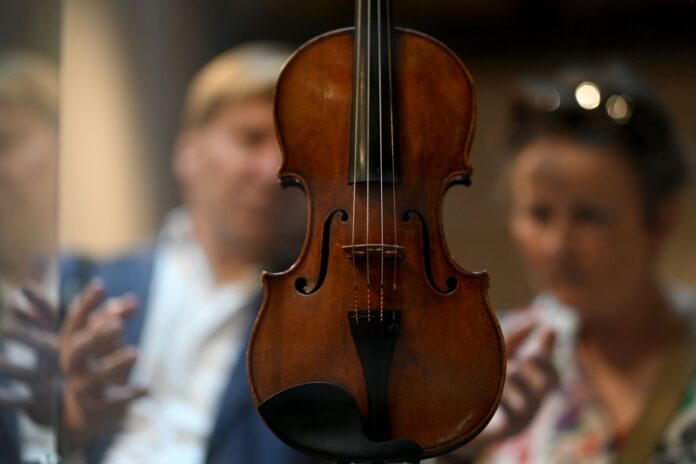(Cremona) For more than three centuries, music lovers all over the world have been trying to unlock the secrets of the magical resonance of Antonio Stradivari’s violins. They will now be able to continue their quest for the Grail in his former home-workshop in Cremona in northern Italy.
The medieval building, which was the home of the famous luthier between 1667 and 1680, has come back to life, becoming a training center for young craftsmen and musicians and a place of pilgrimage for enthusiasts of the four strings.
Finding yourself in the house where the master luthier of Cremona lived and created, “it’s magic, I feel the vibrations”, exclaims Fabrizio von Arx, a 47-year-old Italian-Swiss violinist, at the origin of the project restoration of the Casa Stradivari.
“It was within these walls that the Stradivarius myth was born and that his vision of the perfect resonance of the violin began to germinate,” he marvels during a tour of the house.
After a year and a half of work, the building, where the luthier lived with his first wife and their six children, reopened to the public on Tuesday, thanks to the Casa Stradivari Foundation created in 2021 by the violinist.
While the original beams in the living room on the first floor could be restored, there is no longer any trace of the workshop on the ground floor, transferred to another house in Cremona which was demolished. From now on, two luthier workbenches have been reinstalled there.
The mysterious “altana”, a covered terrace on the roof, surrounded by thick brick walls, has remained intact and continues to fuel the legend.
“That’s where he hung his violins to dry in the light of the setting sun. Hence the enigmatic color of their varnish, between red, brown and orange,” Fabrizio von Arx told AFP.
“With the heat and humidity that prevails in Cremona, the wood of the violins moves a lot and afterwards it stabilizes better,” he explains, seeing in this one of the secrets of the extraordinary sound of the Stradivarius.
Conversely, “the formula of the varnish”, scrutinized by countless scientists, “was the same as that used by the other luthiers of Cremona”, assures this virtuoso.
Another recipe for his dazzling success, “after work, he spent time in the living room with his fellow musicians to listen to his violins and perfect them with their help”.
The obsession with perfect sound also prompted Fabrizio von Arx to acquire in 2017, with the help of a Swiss patron, a 1720 Stradivarius, the Madrileno, for 8 million Swiss francs ($12 million).
“It was love at first sight,” says the violinist, who even had him blessed by a cardinal in Saint Mark’s Basilica in Venice, renaming him “The Angel”.
Of the 1100 violins, cellos, violas and other stringed instruments that left the workshop of the luthier who died in 1737 at the age of 93, there are now around 650 left.
The auction record dates back to 2011, when a Stradivarius dubbed “Lady Blunt” sold for $15.89 million.
Bénédicte Friedmann, a 48-year-old Frenchwoman, is one of more than 180 luthiers based in Cremona, a city of just 70,000 inhabitants.
“Stradivarius had the genius to bring the instrument to both acoustic and aesthetic perfection, he is the unequaled master,” she admits.
Gouges, chisels, penknives, saws, and small wood planes pile up on his workbench. With meticulousness, the luthier is busy enclosing the neck in the case of a violin commissioned by a musician, before applying the varnish and assembling the soul, the bridges and the strings.
Trained as a violinist, she herself tests her creations once assembled, after a month and a half of work. She still uses the same techniques as 300 or 400 years ago, “what has changed are only the tools that have been modernized a bit”.
As for the secrets of Stradivarius, she confirms that “the varnish is very important from an acoustic point of view, because if it is too hard, it prevents the violin from vibrating”.
But she believes that “there is no miracle recipe”, as does Fausto Cacciatori, curator of the Cremona Violin Museum.
He is categorical: “The secret is the Stradivari man, his extraordinary abilities, his mastery of craftsmanship. He’s a man who never stopped experimenting, always looking for the perfect sound.”















